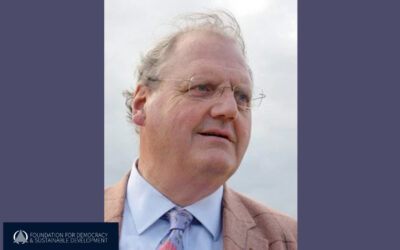The idea of ‘sustainable development’ became widespread with the 1987 publication of ‘Our Common Future‘, a report from the World Commission on Environment and Development (the Brundtland Commission).
Its definition of “development which meets the needs of the present without compromising the ability of future generations to meet their own needs” still provides the broad underpinning for current thinking and practice, based on balancing people’s economic and social needs with the preservation and enhancement of natural resources and ecosystems.
Sustainable development can be understood as primarily a process (a way of doing things, including principles and values) and as implying practical goals or desirable outcomes, such as the UN Sustainable Development Goals being developed in 2015.
However, there are different ways of thinking about how sustainable development is best conceptualised—and put into practice. Our understanding continues to change, particularly with increasing scientific knowledge of environmental impacts, as well as through participatory processes which help pin down and determine priorities and desired goals.
Andrea Westall adds:
Sustainable development is often illustrated by a simple diagram showing three overlapping circles representing social, economic and environmental progress, implying the need for balancing and managing the trade-offs between them.
However, other approaches either reframe these relationships or set out principles and goals to guide policy-making. The UK government, for example, proposed a five principle approach incorporating good governance and ‘sound’ science.
The Welsh government’s Wellbeing of Future Generations (Wales) Bill has set out seven wellbeing goals, partly determined through widespread consultation, to be achieved through sustainable development principles.
Greater scientific understanding around ‘planetary boundaries’ has reinforced the idea of limits, leading to a different model of relationships between the environmental, the social and the economic, with non-negotiable environmental constraints on human activity. Kate Raworth, then at Oxfam, created a useful model of a safe operating space for humankind, including both environmental limits and a social ‘floor’ or minimum set of needs.
Sustainable development impacts cross-political boundaries, requiring collaboration. Implementation also requires very local and individual actions. All this gives rise to the challenge of how best to organise multi-level action to best realise these complex and inter-related goals.
The distinction between ‘strong’ and ‘weak’ sustainability can also lead to very different practical policies and ways forward. Strong sustainability is not optimistic about the role of technology in solving all environmental challenges, implying changes to our lifestyles and economic models; whereas ‘weak’ sustainability believes more strongly in the potential for innovation to solve resource and pollution challenges.
The language itself has caused some tensions, and proved a barrier to widespread engagement. ‘Development’ is often used only in relation to relatively income-poor countries, implying that sustainable development is not relevant everywhere. On the other hand, the phrase can usefully imply that more ‘developed’ countries have not reached an endpoint but need to rethink their strategies to ensure continued economic, social and environmental wellbeing.
There is also a tendency for discussions of this kind to dwell on the negatives, the potential restrictions on people’s lives and the overall difficulties of any such change. With increasing attention to ideas of ‘wellbeing‘, as well as moves towards creating productive circular economies, sustainable development can be seen much more optimistically. As former UN Secretary-General Kofi Annan said:
“Far from being a burden, sustainable development is an exceptional opportunity – economically, to build markets and create jobs; socially, to bring people in from the margins; and politically, to give every man and woman a voice, and a choice, in deciding their own future.”
What we’re reading
The Good Ancestor: How to Think Long Term in a Short-Term World | By Roman Krznaric
Roman Krznaric’s new book, The Good Ancestor: How to Think Long Term in a Short-Term World, explores six ways we can expand our time horizons to confront the great long-term challenges of our age, from the climate crisis to threats from new technologies and the next...
#futuregen—Lessons from a Small Country | By Jane Davidson
In #futuregen, Jane Davidson explains how, as Minister for Environment, Sustainability and Housing in Wales, she proposed what became the Well-being of Future Generations (Wales) Act 2015 – the first piece of legislation in history to place regenerative and...
Prosperity without Growth – Foundations for the Economy of Tomorrow | By Tim Jackson
A new edition of Prosperity Without Growth—the landmark work on post-growth economics by Prof Tim Jackson—was launched on 19 December. The publication of Prosperity without Growth in 2009 marked a critical intervention in the sustainability debate. Tim Jackson openly...
Governing for the Future: Designing democratic institutions for a better tomorrow | Jonathan Boston
Review by Graham Smith While there is widespread recognition that democratic governments are generally poor at dealing with long-term issues, there is a lack of systematic analysis of the variety of causes and responses to short-termism. Jonathan Boston, Professor of...
Research Handbook on Climate Governance, edited by Karin Bäckstrand & Eva Lövbrand
With their Research Handbook on Climate Governance, Karin Bäckstrand and Eva Lövbrand assembled a cutting-edge collection of essays that critically look at the changing landscape of climate governance after the 2009 United Nations climate conference in Copenhagen....
Duality in climate science | Kevin Anderson
Anderson, Kevin (2015): Duality in Climate Science. In: Nature Geoscience, 12 October 2015. The economic and political paradigm in which our democracy operates inhibits climate scientists, so they have to tone down the dangers ahead. In his commentary Duality in...










